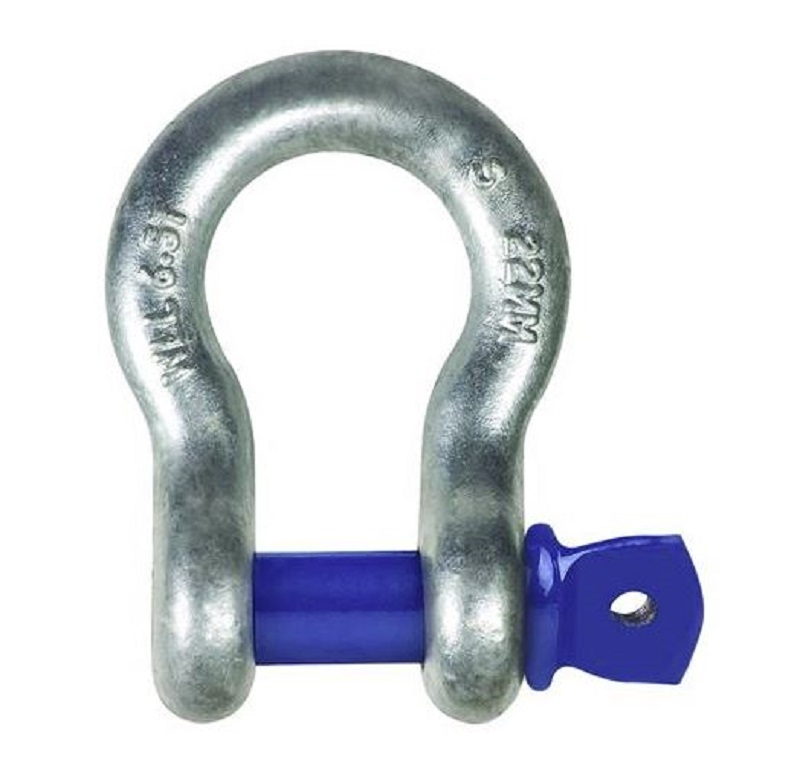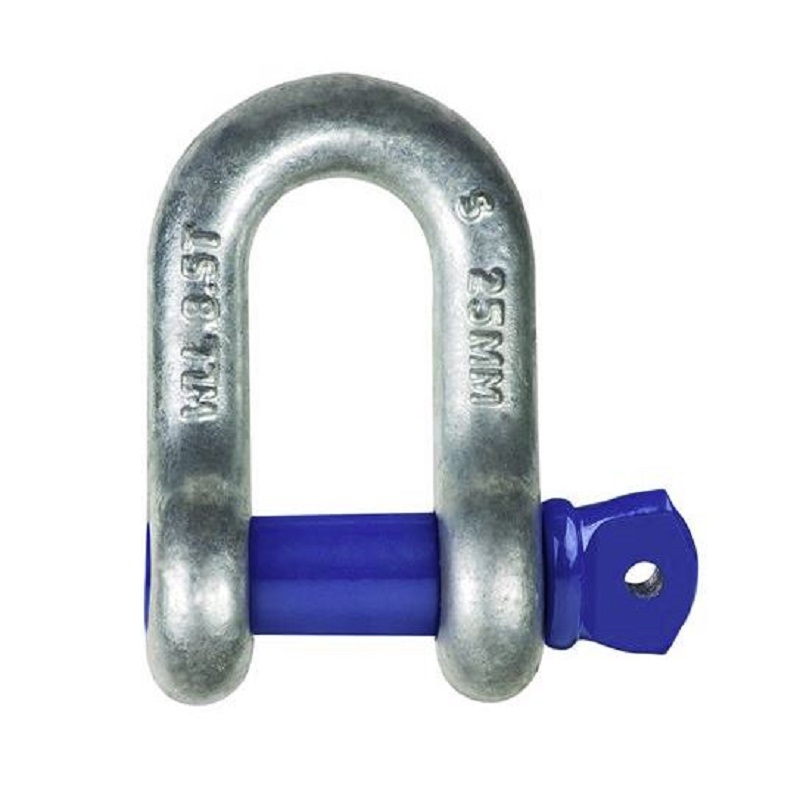
|
Industrial & Automotive Parts |
|---|
Lifting operations are only as good as the components that support their load. One of the imperative parts of a lift is the shackles, mainly used to secure, rig or lift heavy loads, equipment and objects. Shackles are the link between the rest of the chain or sling, and the object or load that is to be lifted or moved. As a connecting piece, ensuring it’s fit for the job is critical for a successful, safe and effective lift.
Shackles are often related to carabiners in smaller hoisting jobs, such as rock climbing. Without an effective carabiner, the rope that secures the climber would be meaningless. Similarly, shackles provide a durable and strong connection between two points and can be opened to disassemble the lift and securely closed to ensure the safety and security of the lifting system.
While this is the general function of lifting shackles, there are different types of shackles available, and each is applicable to different types and conditions of lifting operations. Most shackles fall within two types of configurations: D-type shackles (also known as chain shackles) and anchor or bow shackles. Industrial & Automotive Parts stock lifting equipment for commercial usage across Australia, so here we’ll explore bow shackles vs D-shackles and explain the differences between these two popular types of shackles.

Bow shackles are known for their circular shape (although not a complete circle) in the body of the shackles, which provides more space for the free movement of attachments on the shackle. A key advantage of bow shackles is their ability to handle multiple slings and loads from various directions. Bow shackles avoid the issue of overwhelming side load because of the shape of the body that allows heavier loads at different points of the bow’s circumference, accommodating this differing directional pull.
They’re often used on multi-leg slings as the circular shape can handle multiple attachments, and are commonly applied in rigging because they provide a simple way to fasten chains and straps securely. They’re also ideal for wide lifting straps as the bow shape holds more space compared to D-shackles, which have a narrower opening. The fabric shouldn't pinch in lifting and rigging jobs as it can cause material failures and the sling to break.
As mentioned above, bow shackles come in a range of shapes and sizes and they can support various load limits, but you should always ensure you have a shackle that can handle the load capacity you require. They also come in various colours, which can be helpful in complex lifts and live event rigging where shackle visibility is critical.

In single leg slings, D-shackles are typically the preferred choice as they can hold one sling attachment strongly and securely. They’re shaped like the letter D (hence the name), with a semi-circular ending that holds sling attachments and two strands of the same length connecting to the opening buckle. When the strand lengths are longer, they can resemble a loop shape with one round end cut off, which gives them their alternative name, 'chain shackles'.
D-shackles are excellent at handling a load in a linear direction to the shackle length, and are the preferred choice for large load lengths. They’re the most common type of shackle for this reason, as they’re well suited to many everyday tasks as well as commercial usage for loads lifted in line. However, they can find side or racking loads more difficult and are prone to bending or failing with consistent load in a side direction.
D-shackles typically come with a clevis-type pin or threaded pin and are generally made with stainless steel, alloy steel or galvanised and zinc-plated steel. Ensure you know your intended load so you can match an appropriate D-shackle with the right load capacity, as well as the lift plan to study the directional pull before selecting your final choice.
Bow and D-shackles come in various small, medium or large sizes and are often found with different pin sizes. Measurements provided in D-shackles reflect that of the body and not the pin, as the body provides critical information about weight capacity. It’s imperative to consider the size of shackles used and your lifting requirements to ensure the specifications are suitable to effectively hold your load.
To begin in selecting the right size shackle, refer to the manufacturers' guidelines and identify the safe working load (SWL). If your intended load of the lift or rig is below the SWL, it can sufficiently handle your operation. Just be sure to double-check the shackle’s SWL matches your expected capacity when you receive it, as it should be printed on the shackle itself.
You can also measure the warping and bending of your shackle over time by noting and storing the pin length and distance between the shackle's eyes and body. If your shackle's eye-to-eye distance exceeds the distance in the product description, your shackle has been warped and weakened and shouldn’t be used.
For both body types, a shackle pin or bolt is inserted through the eyes in different ways. The screw pin type is one of the most common pins used to secure shackles, also known as the threaded bolt. Screw pin shackles are excellent for temporary applications and moving from one lift to another as they provide easy fastening and loosening. When a screw-type is appropriate, you'll only have two parts to worry about – the body and the pin – which provides simplicity, speed and safety.
The safety bolt type is another common shackle pin and is the preferred choice for permanent rigs. They’re also excellent in situations that can expect some load movements as they don’t have the potential to unscrew as threaded bolts can. Safety bolt pins consist of a split pin holding a nut and bolt in position – which turns it into a multiple part shackle, making it more time-consuming and difficult to use, but offering a higher guarantee of staying secure.
For more information around which shackles would be right for your required application, feel encouraged to contact our experts at Industrial & Automotive Parts today.